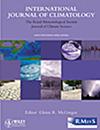Future Precipitation Change in West Africa Using NEX-GDDP-CMIP6 Models Based on Multiple Machine Learning Algorithms
Abstract
This study investigated future precipitation changes over West Africa (WA) using the latest art of climate models sourced from NEX-GDDP CMIP6 and based on five machine learning (ML) algorithms. Changes in precipitation are important for policy makers and researchers to better understand the effects and impacts of climate change. Precipitation variations in the future were evaluated under two scenarios (SSP2-4.5 and SSP5-8.5) of the Shared Socioeconomic Pathways, with 2040–2070 being short term and 2070–2100 being long term, using a 30-year baseline period. The results of the statistical analysis of the five machine learning algorithms showed that the gradient boosting regressor algorithm, which was trained and validated using the NEX-GDDP models' historical precipitation data set, was superior to the other four ML algorithms in simulating the observed precipitation during the validation period. Further, the results demonstrated that the SVR algorithm was the least performing among its pairs. With an annual precipitation range of 10% to nearly 25%, the projected precipitation trended upward under SSP5-8.5. This shows that there will be a significant increase in precipitation over WA in the future. This precipitation increase was observed by the projection done by the choosing ML algorithm. The increase is observed both in the mid term and long term of both scenarios. Our findings in this study are strongly recommended to policy makers in the region and researchers interested in studying the WA climate system.





 求助内容:
求助内容: 应助结果提醒方式:
应助结果提醒方式:


